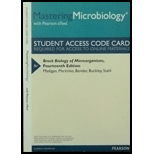
The prokaryotes, eukaryotes, and Archaea replicate, grow, or divide to survive and prolong their generations. During the cell division, the one cell is divided into two daughter cells and this process is repeated numerous times, which is called as cell growth.
Explanation of Solution
Most of the microbes like bacteria undergo cell division through binary fission, where one cell is divided into two daughter cells. During cell division, the cells elongate double their size, and the cell shows a balanced growth in equally producing each daughter cell with all cell organelles and components. The septum is a key process that divides the cells into two daughter cells after the cell growth. A septum is formed between the two adjacent daughter cells that pulls the cell wall and cytoplasm membrane in the opposite directions. The septum is found until the two daughter cells are completely individual.
The key molecular processes that occurs during the cell growth and division are:
- Energy transformation reactions.
- Synthesizes of small molecules leading to macromolecules formation.
- Provides various cofactors and coenzymes for enzymatic reactions.
The key molecular process is synthesizes of monomers into macromolecules. These macromolecules accumulate in the cytoplasm and form new cellular structures such as cell wall, flagella, cytoplasmic membrane, ribosomes, and enzyme complexes. This leads to the process of cell division.
Want to see more full solutions like this?
Chapter 5 Solutions
Brock Biology of Microorgan. -Access
 Human Anatomy & Physiology (11th Edition)BiologyISBN:9780134580999Author:Elaine N. Marieb, Katja N. HoehnPublisher:PEARSON
Human Anatomy & Physiology (11th Edition)BiologyISBN:9780134580999Author:Elaine N. Marieb, Katja N. HoehnPublisher:PEARSON Biology 2eBiologyISBN:9781947172517Author:Matthew Douglas, Jung Choi, Mary Ann ClarkPublisher:OpenStax
Biology 2eBiologyISBN:9781947172517Author:Matthew Douglas, Jung Choi, Mary Ann ClarkPublisher:OpenStax Anatomy & PhysiologyBiologyISBN:9781259398629Author:McKinley, Michael P., O'loughlin, Valerie Dean, Bidle, Theresa StouterPublisher:Mcgraw Hill Education,
Anatomy & PhysiologyBiologyISBN:9781259398629Author:McKinley, Michael P., O'loughlin, Valerie Dean, Bidle, Theresa StouterPublisher:Mcgraw Hill Education, Molecular Biology of the Cell (Sixth Edition)BiologyISBN:9780815344322Author:Bruce Alberts, Alexander D. Johnson, Julian Lewis, David Morgan, Martin Raff, Keith Roberts, Peter WalterPublisher:W. W. Norton & Company
Molecular Biology of the Cell (Sixth Edition)BiologyISBN:9780815344322Author:Bruce Alberts, Alexander D. Johnson, Julian Lewis, David Morgan, Martin Raff, Keith Roberts, Peter WalterPublisher:W. W. Norton & Company Laboratory Manual For Human Anatomy & PhysiologyBiologyISBN:9781260159363Author:Martin, Terry R., Prentice-craver, CynthiaPublisher:McGraw-Hill Publishing Co.
Laboratory Manual For Human Anatomy & PhysiologyBiologyISBN:9781260159363Author:Martin, Terry R., Prentice-craver, CynthiaPublisher:McGraw-Hill Publishing Co. Inquiry Into Life (16th Edition)BiologyISBN:9781260231700Author:Sylvia S. Mader, Michael WindelspechtPublisher:McGraw Hill Education
Inquiry Into Life (16th Edition)BiologyISBN:9781260231700Author:Sylvia S. Mader, Michael WindelspechtPublisher:McGraw Hill Education





